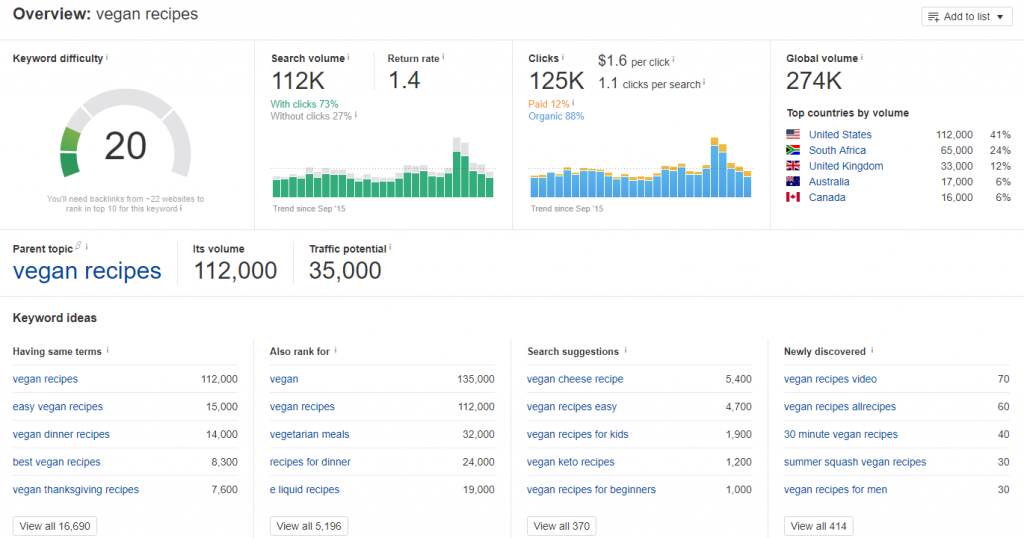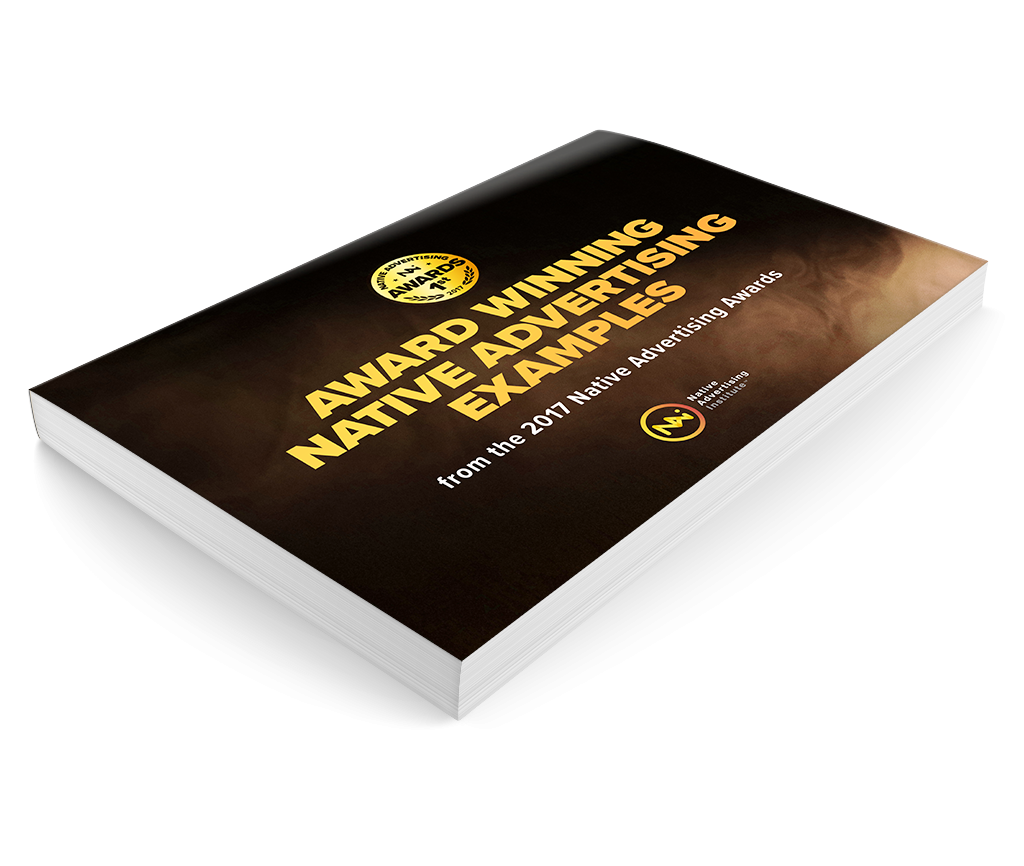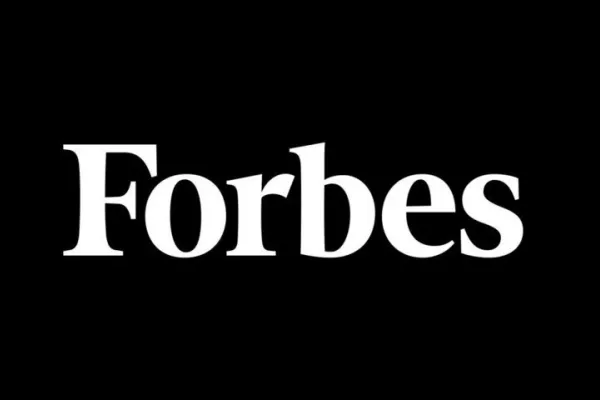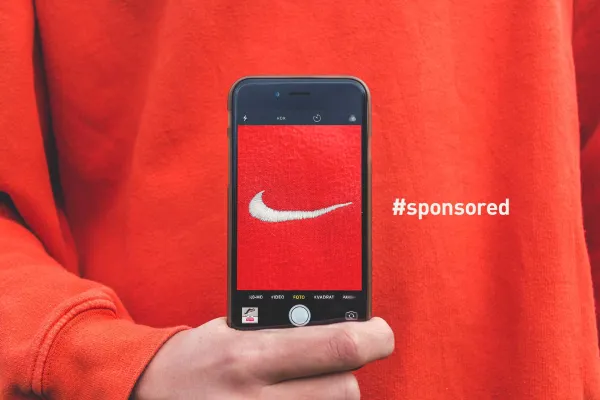 Details
Details
Native advertising is a fascinating concept.
It’s no secret that today’s audiences consume promotional content in vastly different ways than previous generations. Given the incredible range of new devices, platforms, and systems to come out in the past decade, this is no surprise.
The popularity of native ads is growing concurrently with the widespread takeover of video marketing. Which brings us to ask, “How can you create memorable native ads in a business world dominated by video?”
As you could probably imagine, there is no single answer to this question or universal formula for success. Instead, there are a number of time-tested approaches that will put you in a much better position to see a positive return.
Let’s discuss.
The more data-based knowledge you have on your target audience’s consumption habits, the more relevant your native ads will be.
Understand customer data
In essence, so much of native video ads revolve around context. For the content to blend into the given platform, there needs to be a deep understanding of the customer experience and how it can be leveraged to meet brand goals.
Obviously, the best place to start is with customer data.
The insights you glean from this information form the basis for the underlying message within your video, the products or services you’re promoting, the platforms you’re targeting, and of course, the creative direction.
We are incredibly fortunate to live in a time with so many tools and methods to better understand customers. If you run an e-commerce store, your point-of-sale data is a HUGE source of insight for inspiration.
RELATED: Using Data Is a Good Way to Win Awards
The same e-commerce platform your online store runs on can be integrated with the checkout in your physical stores to give you an in-depth look into customer profiles and sales trends to give you an idea of who you are creating content for, what they are interested in, patterns in how they shop, and the channels that work best.
Keywords are another critical element of contextual targeting for native ads. With the emergence of voice search, keyword research becomes important for virtual assistants like Amazon, Siri and Google Home in addition to traditional search engines like Google and Bing.
For example, if your content relates to vegan recipes, you would want to target pages with terms like vegan, egg-free, vegan foods, etc. A tool like Ahrefs Keywords Explorer can help you pick up terms related to your industry, their monthly search volume, as well as the estimated traffic they can drive to your site.

The more data-based knowledge you have on your target audience’s consumption habits, the more relevant your native ads will be.
Ultimately, the emotions you play within your content is what gives the viewer a reason to care.
Leverage emotions
The value of emotional triggers in video content cannot be overstated.
Ultimately, the emotions you play within your content is what gives the viewer a reason to care. It gives the message meaning. There are many different emotional triggers that come into play.
- Joy
- Sadness
- Anger
- Pride
- Fear
- Affection
- Surprise
- Trust
- Uncertainty
- Nostalgia
These are just a few to keep in mind. Here is a wonderful ad produced by Internet Explorer:
The video does a fantastic job of using nostalgia to appeal to 90’s kids. The first 90 seconds takes the viewer back in time to revisit all kinds of familiar gadgets and how different life was in this pivotal decade. It’s not until the very end of the ad when Internet Explorer is presented to encourage people to “reconnect.” What makes this ad great is that instead of placing emphasis on the product, the focus is on the emotion.
This is a very common thread in native video content.
RELATED: Native Advertising That Works? 3 Takeaways from Award-Winning Examples
Emotions are powerful motivators. The better you can leverage the triggers that pertain to your brand, the more engagement you will see.
The technical side of video creation is just as important as the creative side.
Keep creative and technical teams aligned
Although it may not get as much fame and recognition, the technical side of video creation is just as important as the creative side.
The creative team comes up with the concepts and video direction. For native ads, they are tasked with striking the perfect balance of appeal and promotion, without coming off as intrusive. The technical team makes it all happen in a way that seamlessly guides viewers to take action. One cannot exist without the other.
While these two teams certainly have different ways of thinking and approaches to problem-solving, the best results come from brands where both can work together as a well-oiled machine.
RELATED: The Dos and Don'ts of Branded Videos
When it comes to native ads on media publications, especially those related to extreme sports, Red Bull is about as good as it gets. Red Bull doesn’t stop at just creating content to promote their products, they also produce their own journalistic content under their Red Bull Media House arm, which they then sell to Reuters.
Again, for video, they have their own platform – Red Bull TV, which airs videos that redefine the concept of pushing limits altogether. Within the content that is aired, there is no mention of special promotions – or anything that even tells you to drink Red Bull. Here is a video they produced at the beginning of 2018:
https://youtu.be/llcfkn0Uakc
If creative and technical visions are not on the same page for a native ad, the output will suffer.
The focus of the video is clearly on the amazing scenery and advanced skill of the skier. In addition to the watermark in the bottom right corner, the only mention of Red Bull is the logo on the skier’s glowing parachute, which takes nothing away from the viewing experience.
While the scripting and visual concepts are ideated by creative, the technical team must put the elements together to promote the subtle message. Furthermore, they need to do things like ensuring that landing pages and CTAs work properly in order to direct interest to the desired action.
RELATED: From Content Creation to A/B Testing: 5 Native Advertising Tips to Brands
If creative and technical visions are not on the same page for a native ad, the output will suffer. This is a very common pain point for brands and marketing departments. Fortunately, there are all kinds of resources and solutions available to help.
For example, Workzone is a task management software designed to keep all departments involved in a campaign in the loop and working towards the big picture.
For creative and media teams to produce stellar ads in cohesion, they have to take into account the marketing big picture and all the campaigns that are going on at the moment; there can be no gaps in communication. When it comes to marketing operations – in any capacity – the output is only as good as the internal system in place.
From a viewer’s standpoint, there is almost nothing more infuriating than a choppy video that has to stop and buffer every few seconds.
Adapt to the user
Digital content consumption is getting more and more diverse every year.
Rewind 30 years and television was the primary platform for video ads. Nowadays, people are exposed to video ads on smart TVs, desktop computers, laptops, cell phones, tablets, gaming consoles, virtual reality, and much more.
Given all the different devices out there, it’s important to note that not all systems are created equal. From a viewer’s standpoint, there is almost nothing more infuriating than a choppy video that has to stop and buffer every few seconds. Although your native ad might blend in perfectly with the chosen platform, a video that doesn’t load smoothly isn’t doing anyone any good.
RELATED: 5 Global Native Advertising Trends 2018
Video creators need to consider the fact that different devices come with different levels of bandwidth. The name of the game is balance. Failing to achieve this will only alienate people on certain devices.
For this purpose, a video platform like Kaltura can help manage your streaming and delivery capabilities adapt across the board. The transcoding feature enables you to stream video with smooth playback on any device, regardless of connection speed or hardware setup.
Consumers expect video quality to be nothing less than perfect. If the content doesn’t load properly, all it takes is a quick swipe and the messaging you worked so hard to create is water under the bridge.
Native advertising is becoming the norm and video content is taking over.
In conclusion
The numbers don’t lie.
Native advertising is becoming the norm and video content is taking over. Bringing these concepts together is something that all marketing teams and creative agencies must come to terms with. Failing to do so will only put your efforts at more of a disadvantage as time goes on.
Get inspired for your next campaign. Download "Award-Winning Native Advertising Examples 2017"




